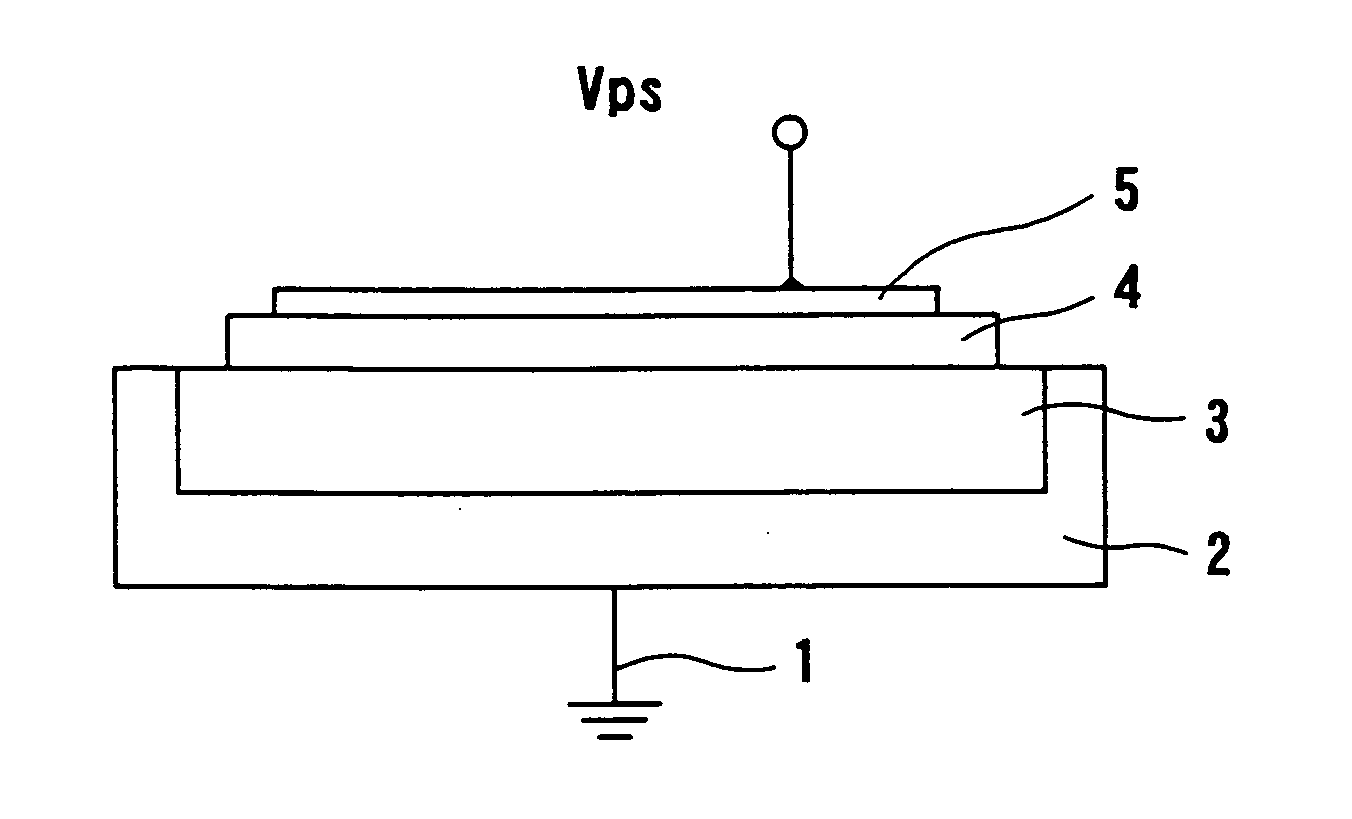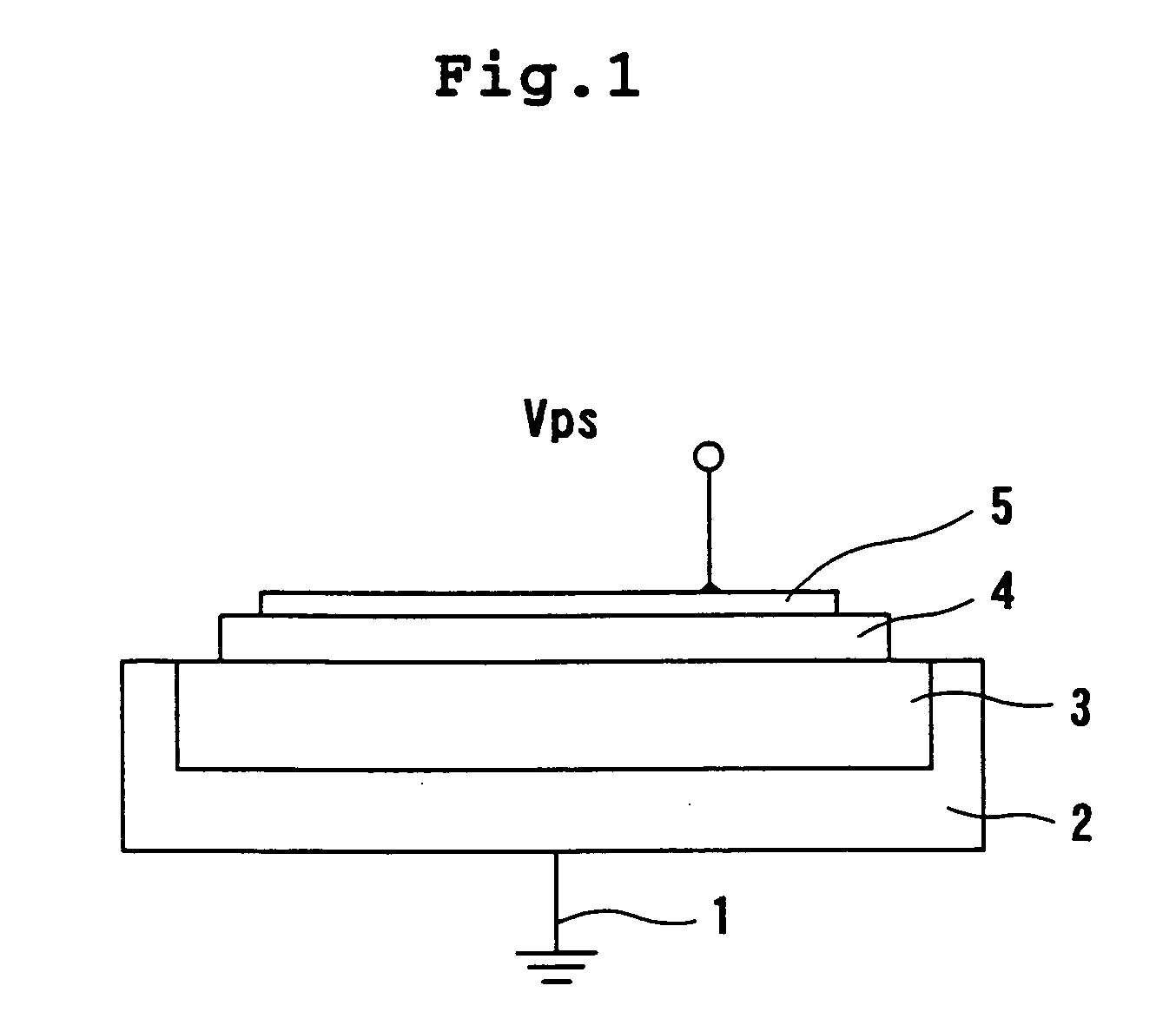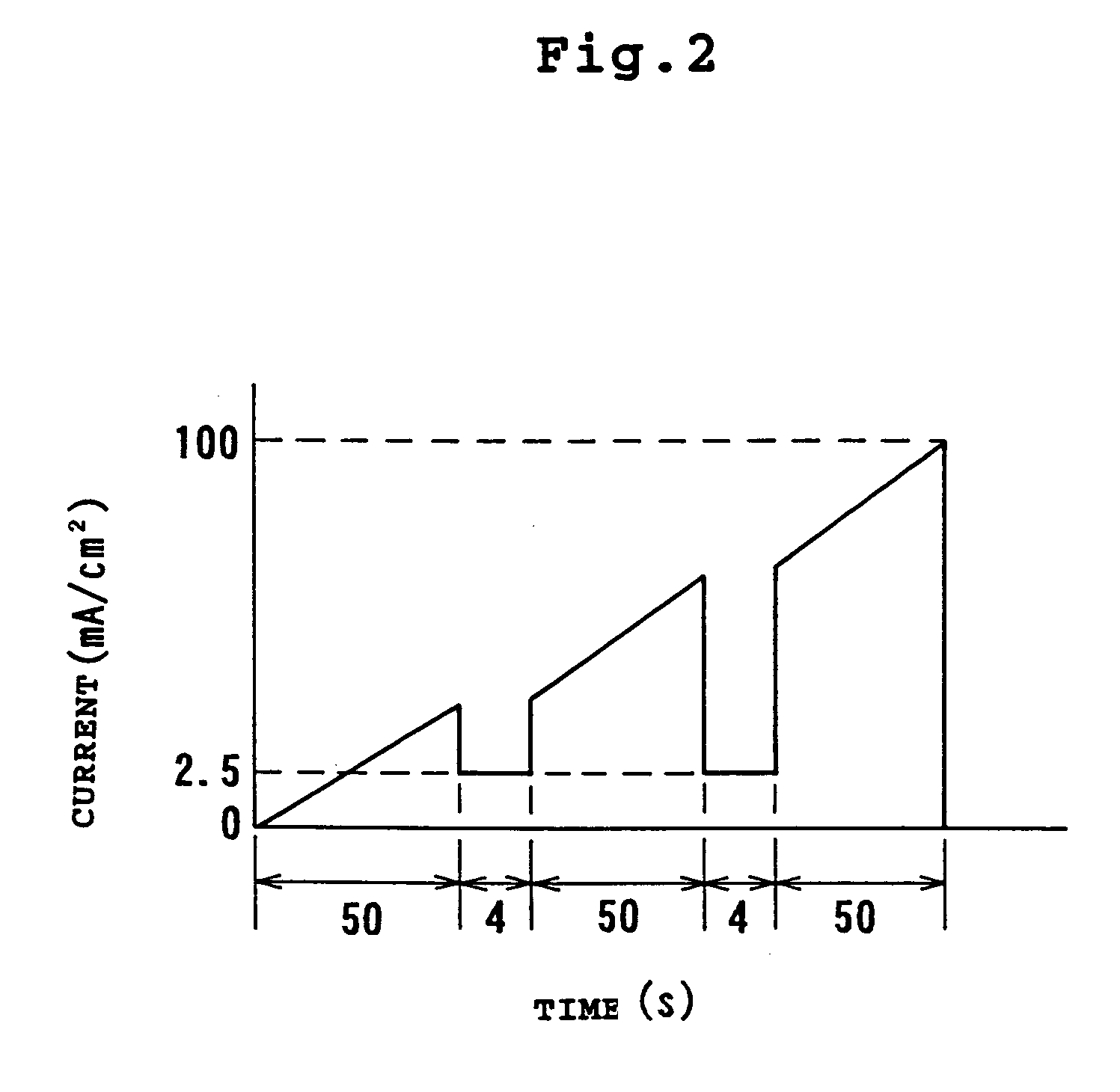Method of generating ballistic electrons and ballistic electron solid semiconductor element and light emitting element and display device
a technology of applied in the field of generating ballistic electrons and ballistic electron solid semiconductor elements and light emitting elements and display devices, can solve the problems of no research or development obtaining excellent, decrease of device thickness or increase of device size,
- Summary
- Abstract
- Description
- Claims
- Application Information
AI Technical Summary
Benefits of technology
Problems solved by technology
Method used
Image
Examples
example 1
[0045] A ballistic-electron-exciting solid-state light-emitting device of the invention of the present application is fabricated and basic characteristics are studied.
[0046] As shown in FIG. 1, in the case of a fabricated ballistic-electron-exciting solid-state semiconductor device, a PS layer (3) is formed by applying anodic oxidation to the surface of an n-type silicon substrate (2) (resistivity of 0.018 .OMEGA.cm) having a orientation (111) on whose back an ohmic electrode (1) is formed in a mixed solution (mixture rate of 1:1) of 50 wt % HF aqueous solution and ethanol under light irradiation using a 500-W tungsten lamp as a light source. In this case, as shown in FIG. 2, the operation of slowly increasing an anodic oxidation current for 158 sec and decreasing the anodic oxidation current up to 2.5 mA / cm.sup.2 every 4 sec in the middle of the above period of 158 sec is performed twice. Finally, the anodic oxidation current becomes 100 mA / cm.sup.2.
[0047] The PS layer (3) has a th...
example 2
[0055] Another ballistic-electron-exciting solid-state light-emitting device of the invention of the present application is fabricated to study the basic characteristic.
[0056] The example 2 uses the n-type silicon substrate (2) constituted as shown in FIG. 1 as a p-type silicon substrate. Specifically, a PS layer (3) is formed by applying anodic oxidation to the surface of a p-type silicon substrate (resistivity: approx. 0.2 .OMEGA.cm) which has an orientation (100) and on whose back an ohmic electrode (1) is formed in a solution obtained by mixing an HF aqueous solution (55 wt %) and C.sub.2H.sub.5OH at a ratio of 1:1 under a darkroom state and moreover applying quick thermal oxidation at 900.degree. C. for 15 min. In the case of the anodic oxidation, a cycle of an anodic oxidation current of 5 mA / cm.sup.2 and an anodic oxidation time of 6 sec and a cycle of an anodic oxidation current of 100 mA / cm.sup.2 and an anodic oxidation time of 15 sec are alternately repeated three times.
[0...
example 3
[0059] Still another ballistic-electron-exciting solid-state light-emitting device of the invention of the present application is fabricated to study the basic characteristic.
[0060] The example 3 uses the PS layer (3) constituted as shown in FIG. 1 as a nano-cyrstallized polysilicon film. Specifically, an n.sup.+-type polysilicon film (thickness of 5 .mu.m) is first formed on the surface of an n-type silicon substrate (resistivity: 0.005 to 0.0018 .OMEGA.cm) which has an orientation (100) and on whose back an ohmic electrode (1) is formed. Then, a porous polysilicon (PPS) film is formed by applying anodic oxidation up to almost the half depth of the n.sup.+-type polysilicon film in a solution obtained by mixing an HF aqueous solution (55 wt %) and C.sub.2H.sub.5OH at a ratio of 1:1 under irradiation by a tungsten lamp and moreover applying electrochemical oxidation to the silicon film in a 1NH.sub.2SO.sub.4 solution under a darkroom state. In the case of the anodic oxidation, a cycl...
PUM
 Login to View More
Login to View More Abstract
Description
Claims
Application Information
 Login to View More
Login to View More - R&D
- Intellectual Property
- Life Sciences
- Materials
- Tech Scout
- Unparalleled Data Quality
- Higher Quality Content
- 60% Fewer Hallucinations
Browse by: Latest US Patents, China's latest patents, Technical Efficacy Thesaurus, Application Domain, Technology Topic, Popular Technical Reports.
© 2025 PatSnap. All rights reserved.Legal|Privacy policy|Modern Slavery Act Transparency Statement|Sitemap|About US| Contact US: help@patsnap.com



